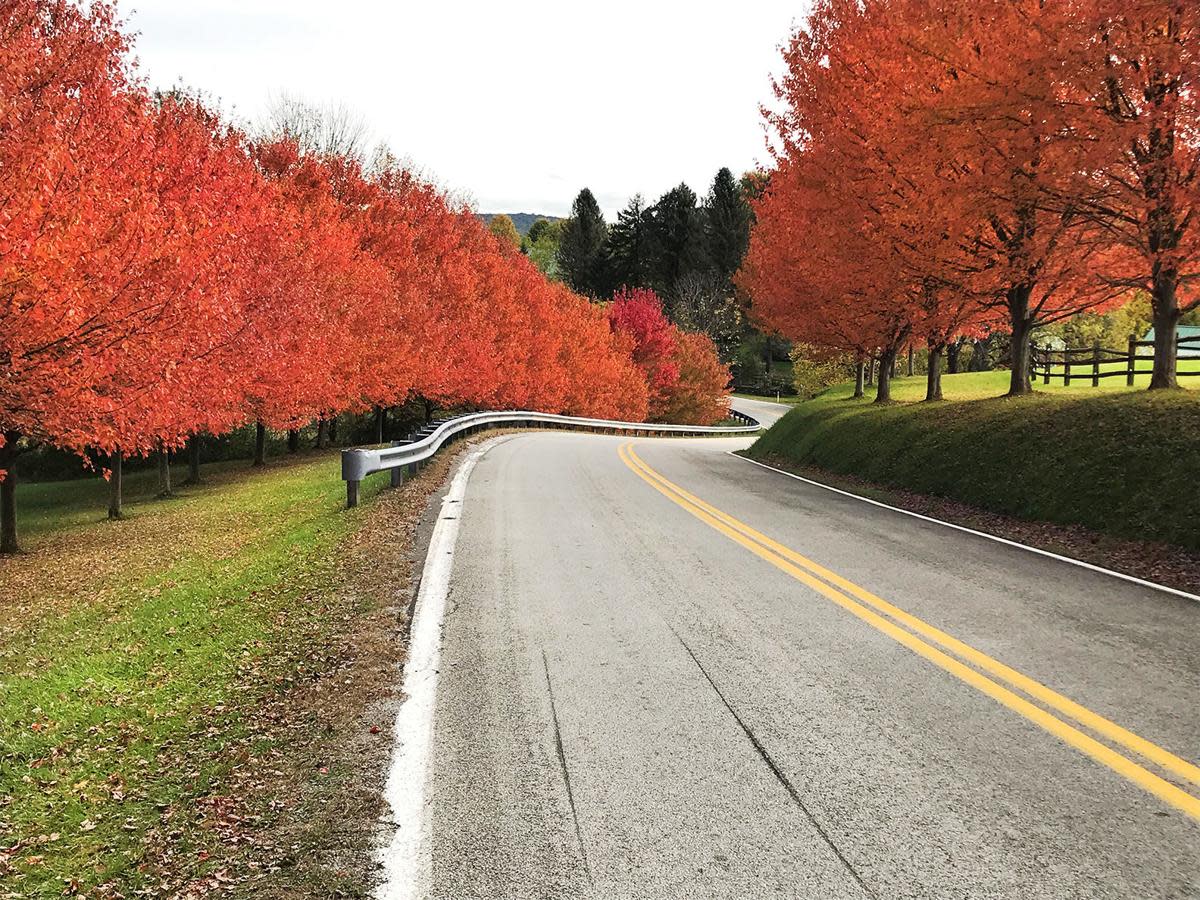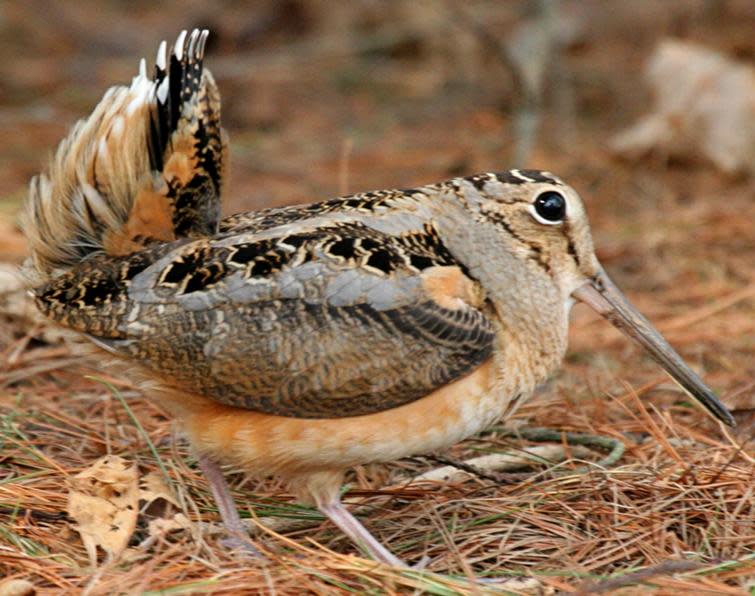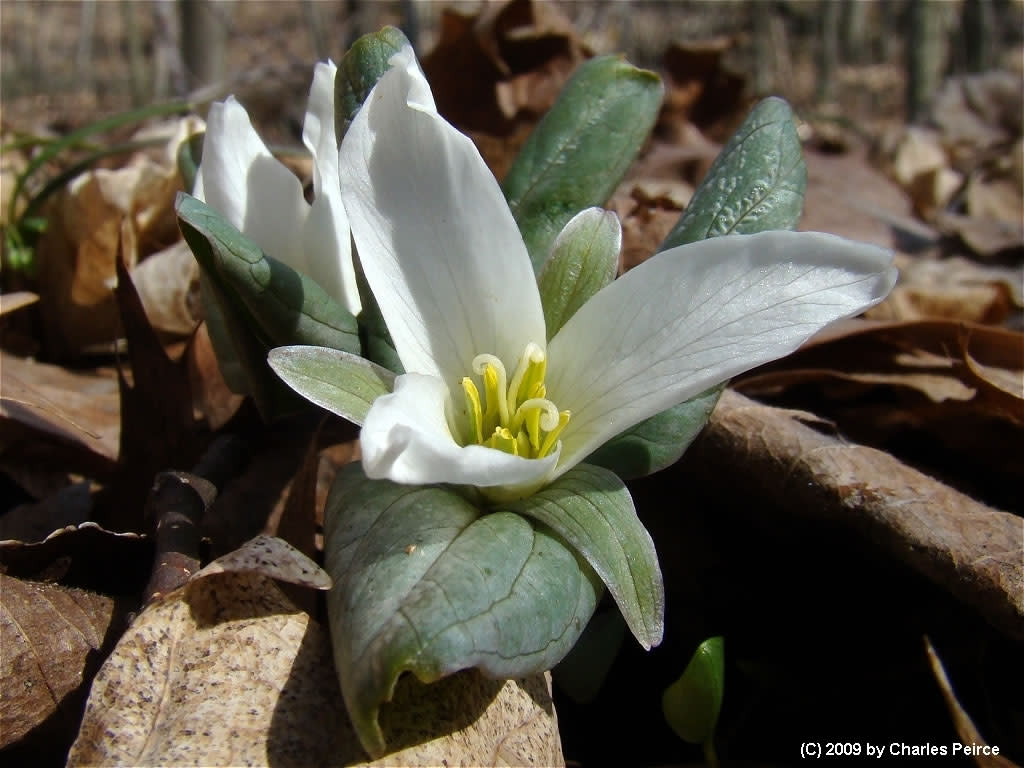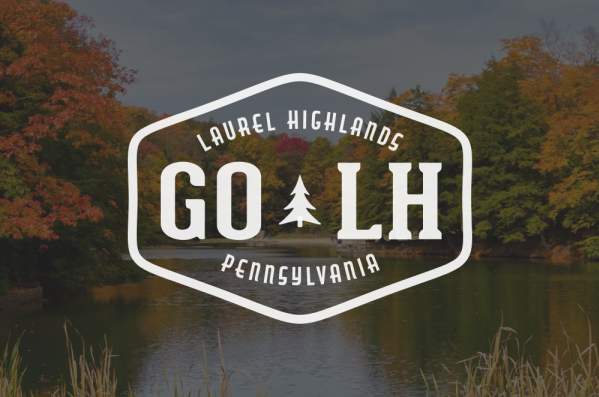The natural beauty of the Laurel Highlands is stunning any time of year. With so many of us spending more and more time outside, exploring new nooks and crannies of our great outdoors, it got me thinking about the region's array of fascinating flowers and wildlife. I'm certainly no botanist, naturalist, or biologist, so I reached out to the professionals - Kim Peck, Environmental Education Specialist at Laurel Hill State Park Complex, and Rachael Mahony, Environmental Education Specialist at Forbes State Forest, for some help identifying and interpreting some of the coolest creatures in our region.
If you do encounter any of these special treasures while exploring the Laurel Highlands, please do not touch them. Give them space and admire from afar.
FLORA
Snow Trillium
Sometimes called the “Queen of Spring,” the snow trillium begins to peek out in late March and early April, making it one of the first flowers to bloom each spring. The snow trillium is a graceful, but hardy flower to behold that can be found near steep stream valley slopes with lots of limestone. Look but please don’t touch these graceful beauties. Picking the flower will kill the plant.

Mountain Laurel
Pennsylvania’s state flower, mountain laurel, is abundant in the Laurel Highlands! The beautiful shrub keeps its foliage year-round, but keep an eye out in May and June for umbrella-like flowers that range in color from white to pink, with unique purple markings. Want to see the spring flowers yourself? Lucky for you, they can be found in many Laurel Highlands state parks and forests and on Fallingwater's property!

Sugar Maples
Sugar maples pull double duty in the Laurel Highlands – tasty maple syrup and stunning fall foliage.
In order to produce maple sugar for syrup, there needs to be an abundance of maple trees and the perfect climate – a la the Laurel Highlands! Springtime weather in the region is ideal because of its cold nights and warm days. That alternating weather cycle, from freezing to thawing, is what changes the atmospheric pressure in the trees to allow the sap to flow out of them. Visitors can find Somerset County maple syrup at local farmers’ markets and the sugar camps where it is produced.
In the fall, the darling sugar maples use their abundant natural sugar in combination with rainfall and sunlight to create some of the most amazing fall foliage. Sugar maples often turn a fiery red or majestic orange when in their peak.

Purple Pitcherplants
The Purple Pitcherplant didn’t always call Spruce Flats Bog “home.” Once upon a time, Spruce Flats Bog was once a virgin hemlock forest and in the late 1800s/early 1900s these trees were harvested leaving the area barren. Rainwater began to collect due to the unique underground geology of impermeable sandstone which helped the area to fill like a bowl, resulting in a bog.
Bogs are nutrient-poor because water typically doesn’t actively flow in and out, rather the water in the bog is from precipitation, such as rain or snow – this decreases oxygen. Low oxygen and cold water slow rates of plant decomposition which creates an acidic environment within a bog, in most cases. Spruce flats bog is unique in that there is a small water source that feeds into the bog which makes the water less acidic than the typical bog.
In the mid-1950s, purple pitcherplants were transplanted to the bog by the Westmoreland Botanical Society. Native to Pennsylvania and much of the Northeastern US, the purple pitcherplant gets its name from the ‘vase-like’ shape of its leaves. Flowers extend above the leaves and bloom during the summer.
Pitcherplants are carnivorous plants that consume insects by luring in prey, trapping it, and consuming it. The insects are trapped in the vase-like leaves and are unable to escape the slippery, hairy interior of the leaves. At the bottom of the ‘vase’ are digestive enzymes that will break down the insect and nutrients with be absorbed by the plant.

Purple Fringeless Orchid
Orchids do grow in Pennsylvania! The Purple Fringeless Orchid is very rare. It is listed as a threatened species in PA. This orchid blooms in July and August and is pollinated by moths and butterflies. It prefers marshy meadows with acidic soil. It is only found in a few counties and currently occurs in both Fayette and Somerset Counties. We do not release the specific location of this orchid to ensure that it remains protected and a part of the fascinating flora of Pennsylvania.
FAUNA
Vernal Pools
Vernal pools are usually temporary puddles or ponds of water that are used by amphibians for breeding. The pools come alive in early spring. The sounds of frogs and toads are quirky and unique to each species. It is super fun to know where the pools typically exist in the area and explore them each spring. You can take in the sometimes deafening sounds of amphibians welcoming warmer weather and potential mates.

White Tail Deer
An interesting and important fact about the White-tailed Deer is related to mother deer and new fawns. New fawns are born in late May and early June. The fawns will drink mother’s milk for the first part of their lives. Mother deer need to forage for their own food and keep healthy in order to feed and care for her fawn. She does not take the fawn with her to forage, but instead leaves it in a safe place, hidden in high grass, to rest until she returns. The fawn remains still and scentless to detract from any predators knowing its location. If you see a small fawn curled in a field please leave it alone. Never touch a fawn! Observe from a distance and allow it to rest and wait for its mother's return.

American Woodcock
This migratory game species is known by unique names like “timberdoodle” and “bog sucker.” They eat primarily earthworms. The long bill is perfectly suited to gather earthworms and their large eyes keep a lookout for predators while they are eating. Their late winter/early spring arrival to Pennsylvania breeding grounds brings a fun courtship display performed by the male woodcock.
The woodcock prefers at least a quarter acre of somewhat soggy open field with surrounding forest for its display. The male will sit on the ground and make an audible “peeeent” sound to begin the display. It sounds like an insect. Then the woodcock will take flight and fly 200 to 300 feet in the air while its wings whistle. Then it will spiral back to the field while making a chirping/gurgling sound. Again it will “peeeent” a few more times and repeat. This typically lasts for one-half hour to an hour at dusk and sometimes at dawn. The courtship begins in early March and continues through mid-May.

Brook Trout
The Brook Trout is the only species of native trout found in the Laurel Highlands. These sensitive fish require pristine streams full of macroinvertebrate life and high-quality cold water streams in order to thrive.




